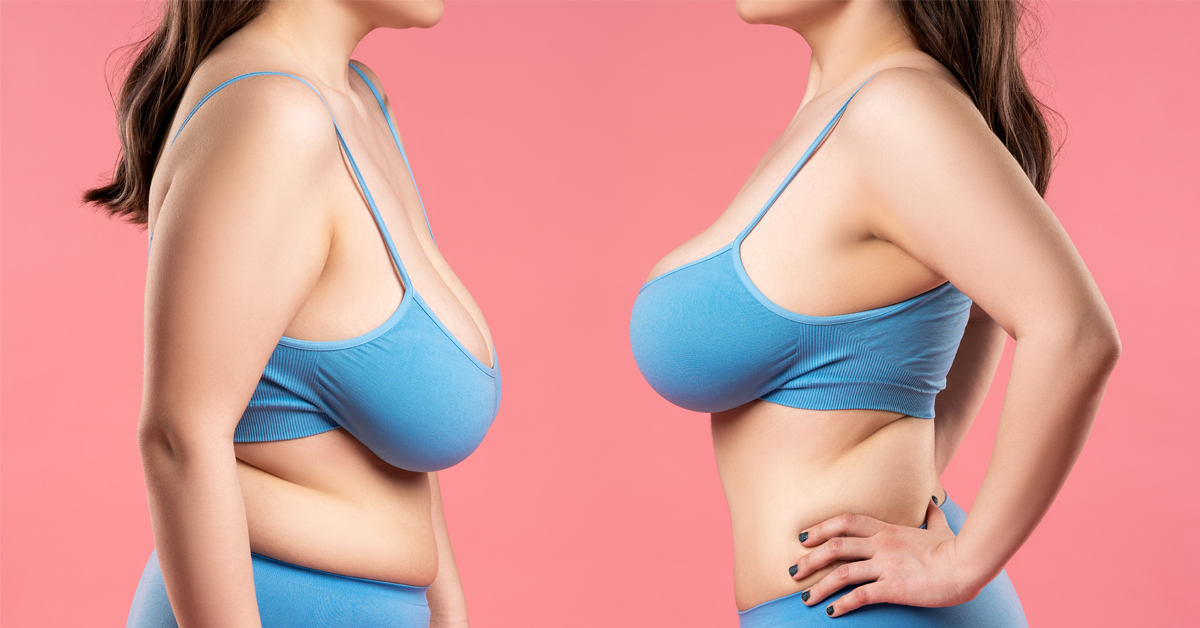Breast ptosis is when the breast tissue and skin lose their firmness and elasticity, leading to drooping or sagging breasts. Although this is often a natural part of aging, various factors can contribute to or speed up the process of breast ptosis.
Here are some of the most common things that can worsen or speed up the process of breast ptosis and available treatment options to improve elasticity and shape.
Causes of Breast Ptosis
1. Aging
As women age, the skin over the breasts starts to lose elasticity, which can cause the breasts to begin to sag. The ligaments and tissues that support the breasts also begin to weaken and can also lead to sagging.
2. Pregnancy and Breastfeeding
A woman’s body undergoes significant changes during pregnancy and breastfeeding. Hormonal fluctuations, weight gain, and breast enlargement can affect the elasticity of the breast tissue and the support structures of the breasts, which can lead to sagging. During breastfeeding, the repetitive stretching of the breast tissue during nursing and the filling and emptying of the breasts can lead to sagging.
3. Weight Fluctuations
Losing or gaining weight can stretch the skin around the breasts and cause the breasts to sag or droop.
4. Genetics
Genetics can play a significant role in determining your breast shape and size, influencing the likelihood that you may experience breast sagging or drooping.
5. Smoking
Smoking is associated with premature aging of all your organs, including your skin. Smoking can cause the skin of the breasts to lose its elasticity, resulting in breast ptosis.
6. Lack of Proper Support
Not wearing an adequate or supportive bra can lead to the sagging of breasts over time. If you have naturally large breasts, their weight can stretch the skin and ligaments surrounding the breasts and result in breast drooping.
Levels of Breast Ptosis
Breast ptosis can be categorized into grades or levels based on the degree of breast sagging you are experiencing. To determine your grade of breast ptosis, your doctor will measure the position of your nipple in relation to the inframammary fold, which is the crease beneath the breasts. The following are the specific grades of breast ptosis women can experience.
Grade 1 or Mild Ptosis
In grade 1 or mild breast ptosis, the nipples are at or slightly below the level of the inframammary fold.
Grade 2 or Moderate Ptosis
In this grade of breast ptosis, the nipple is located below the inframammary fold but is still above the lowest point of the breast.
Grade 3 or Advanced Ptosis
The nipple is significantly below the inframammary fold, and the breasts have a more pronounced drooping appearance.
Treatment Options
If you struggle with breast ptosis, the treatment options can vary depending on the severity of the ptosis and your aesthetic goals. Your overall health also determines what treatment option may be right for you. Here are three common treatment options:
1. Breast Lift or Mastopexy
A breast lift, or mastopexy, is a surgical procedure performed by your doctor to help improve the shape and positioning of your breast tissue. Your doctor will remove excess skin, reshape the breasts, and reposition your nipple so you can achieve a more youthful and lifted appearance.
2. Breast Augmentation
In some cases, a breast augmentation with implants may be required to achieve your desired aesthetic look.
3. Supportive Bras
If surgical intervention is not recommended for you, a supportive, well-fitting bra may help prevent further sagging of the breasts and provide a lifted appearance of the breast tissue.
Find the Right Solution for You
If you struggle with breast sagging or drooping, schedule a free consultation appointment to talk with Dr. Madry about breast ptosis and learn what treatment options may be right for you!

